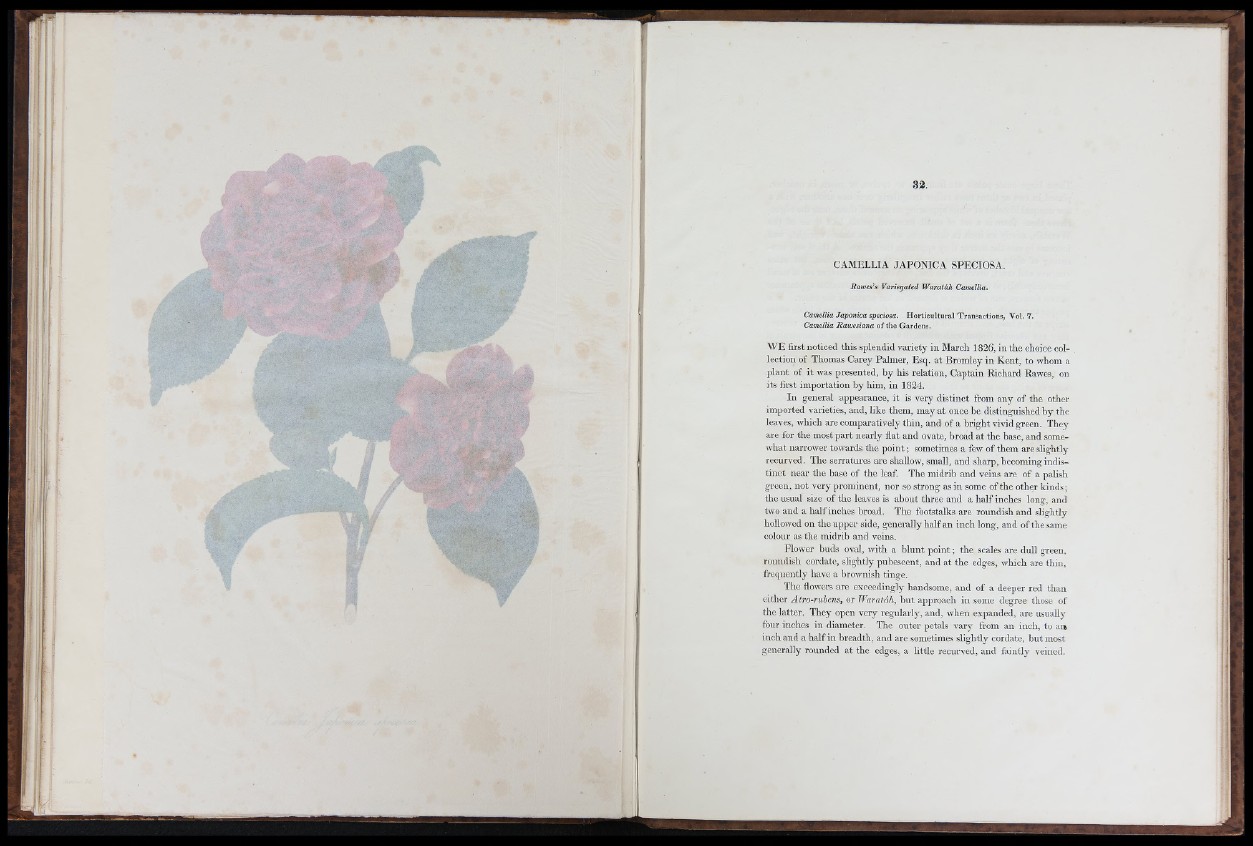
y-i.y-
- V ,
/ * '
'k -M ïV '
i .
‘W
í V . , j r ' AS. m w m
il
32.
CAMELLIA JAPONICA SPECIOSA.
R aiv e s's Va rieg a ted W a ra tá h Camellia.
Camellia Jap o n ica speciosa. H o r t ic u l tu r a l T r a n s a c tio n s , V o l. 7.
Camellia R aw e s ia n a o f th e G a rd e n s .
W E first noticed this splendid variety in March 1826, in the choice collection
of Thomas Carey Palmer, Esq. at Bromley in Kent, to whom a
plan t of it was presented, b y his relation, Captain Richard Rawes, on
its first importation by him, in 1824.
In general appearance, it is very distinct from an y of the other
imported varieties, and, like them, may at once be distinguished b y the
leaves, which are comparatively thin, and of a brig h t vivid green. They
are for the most p a rt nearly flat and ovate, broad a t th e base, and somewhat
narrower towards th e point ; sometimes a few of them are slightly
recurved. The serratures are shallow, small, and sharp, becoming indistin
c t near the base of th e leaf. The midrib and veins are of a palish
green, n o t very prominent, nor so strong as in some of th e other kinds ;
th e usual size of th e leaves is about three and a h a lf inches long, and
two and a h a lf inches broad. The footstalks are roundish and slightly
hollowed on the upper side, generally h a lf an inch long, and of the same
colour as the midrib and veins.
Flower buds oval, with a b lu n t point ; the scales are dull green,
roundish cordate, slightly pubescent, and at the edges, which are tliiii,
frequently have a brownish tinge.
The flowers are exceedingly handsome, and of a deeper red than
either Atro-rubens, or Warat¿ih, b u t approach in some degree those of
the latter. They open very regularly, and, when expanded, are usually
four inches in diameter. The outer petals vary from an inch, to ai»
inch and a half in breadth, and are sometimes slightly cordate, b u t most
generally rounded at the edges, a little recurved, and faintly veined.